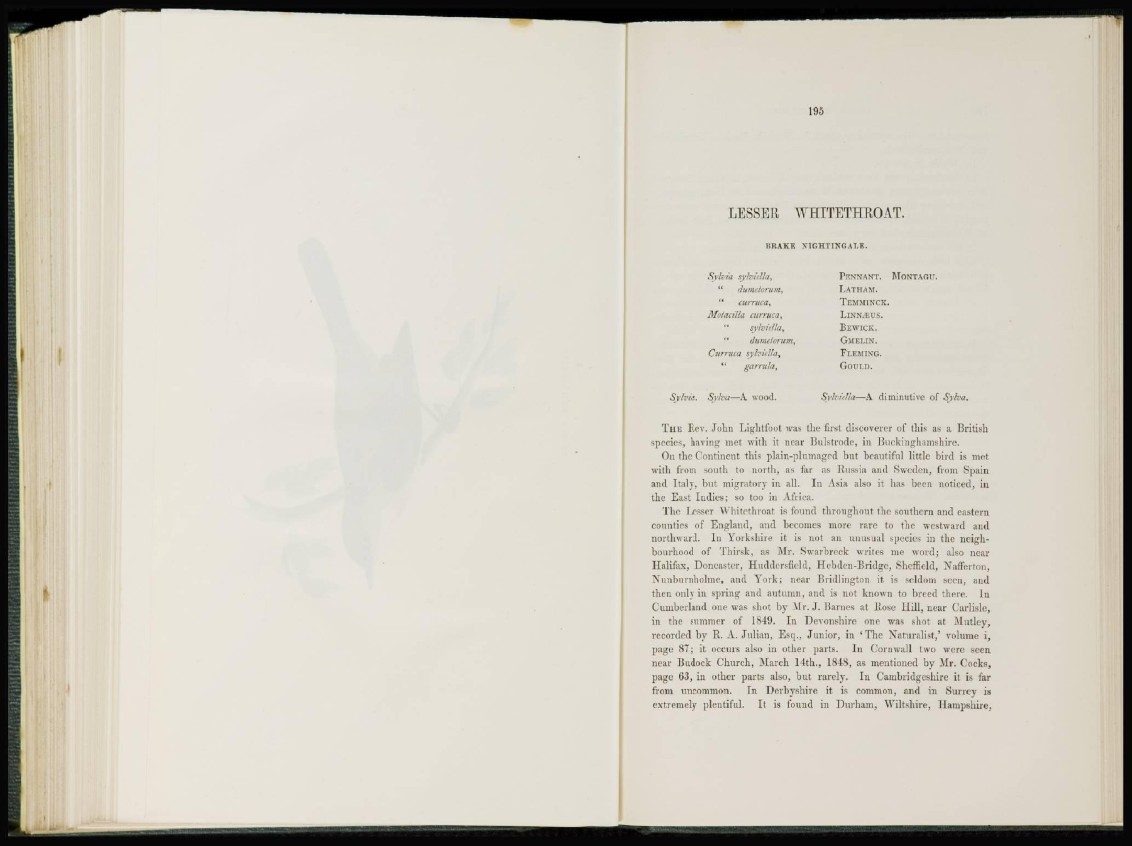
LESSER WHITETHROAT.
BRAKE NIGHTINGALE.
Sylvia sylviella,
" dumetorum,
" curruca,
Matacilla curruca,
" sylviella,
" dumelarum,
Curruca sylviella,
" gárrula.
PENNANT. MONTAGU.
LATHAM.
TEMMINCK.
LlNNJSUS.
BEWICK.
GMELIN.
FLEMING.
GOULD.
Sylvia. Sylva—A wood. Sylviella—A diminutive of Sylva.
T H E Rev. John Lightfoot was the first discoverer of this as a British
species, having met with it near Bulstrode, in Buckinghamshire.
On the Continent this plain-plumaged but beautiful little bird is met
with from south to north, as far as Russia and Sweden, from Spain
and Italy, but migratory in all. In Asia also it has been noticed, in
the East Indies; so too in Africa.
The Lesser Whitethroat is found throughout the southern and eastern
counties of England, and becomes more rare to the westward and
northward. In Yorkshire it is not an unusual species in the neighbourhood
of Thirsk, as Mr. Swarbreck writes me word; also near
Halifax, Doncaster, Huddersfield, Hebden-Bridge, Sheffield, NatTerton,
Nunburnholme, and York; near Bridlington it is seldom seen, and
then only in spring and autumn, and is not known to breed there. In
Cumberland one was shot by Mr. J. Barnes at Rose Hill, near Carlisle,
in the summer of 1849. In Devonshire one was shot at Mutley,
recorded by R. A. Julian, Esq., Junior, in ' T h e Naturalist,' volume i,
page 87; it occurs also in other parts. In Cornwall two were seen
near Budock Church, March 14th., 1848, as mentioned by Mr. Cocks,
page 63, in other parts also, but rarely. In Cambridgeshire it is far
from uncommon. In Derbyshire it is common, and in Surrey is
extremely plentiful. It is found in Durham, Wiltshire, Hampshire,